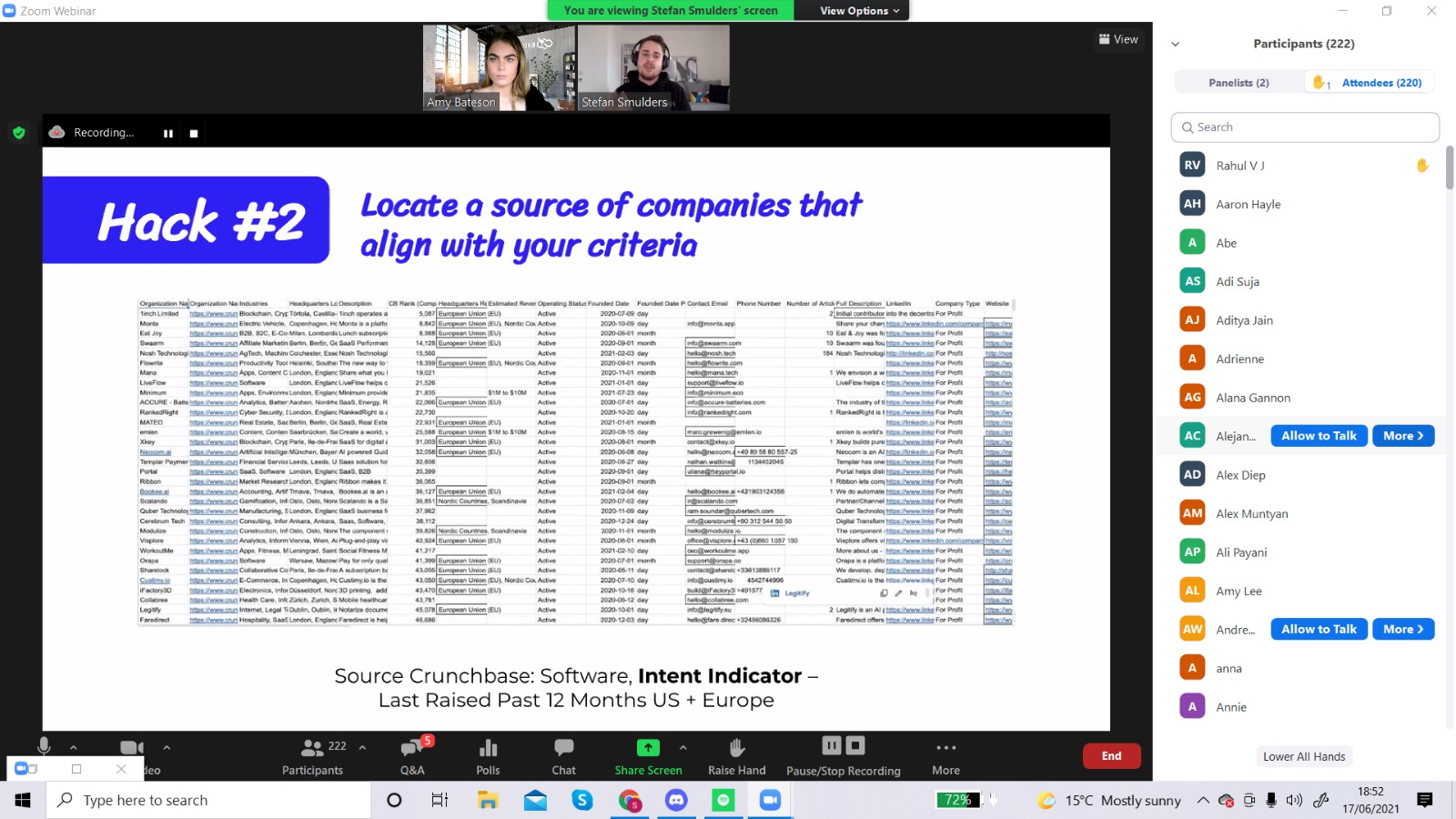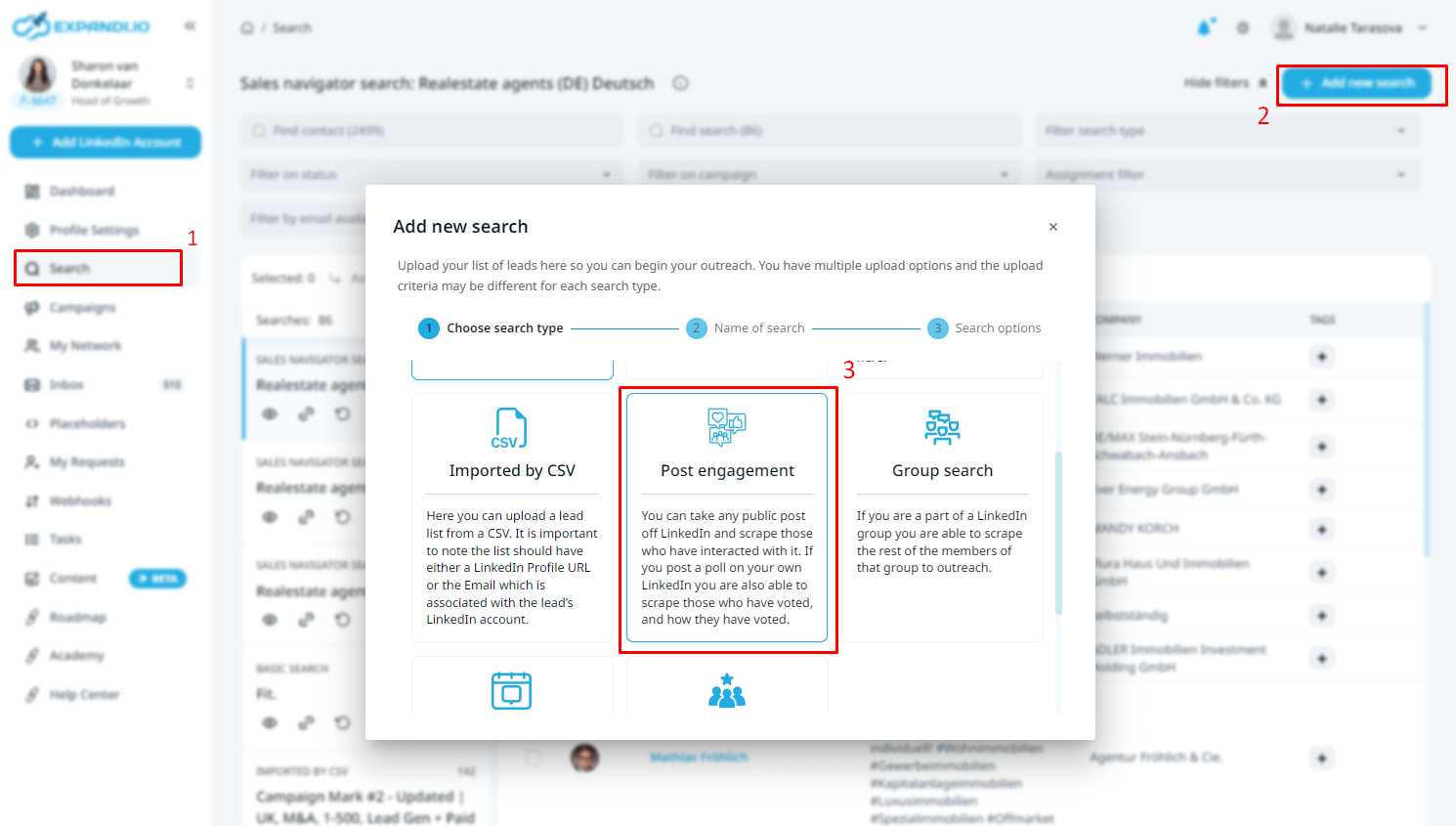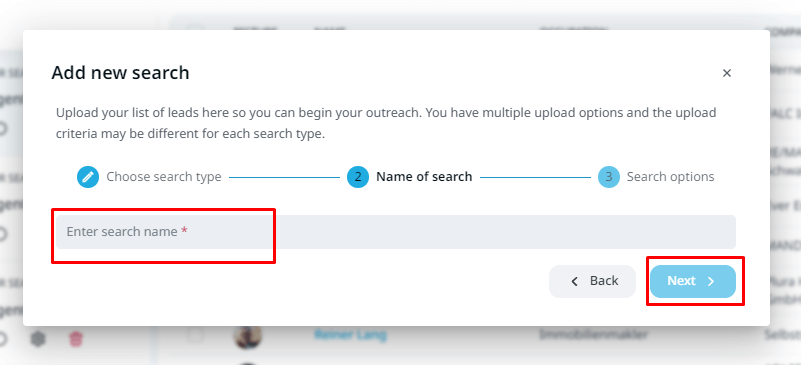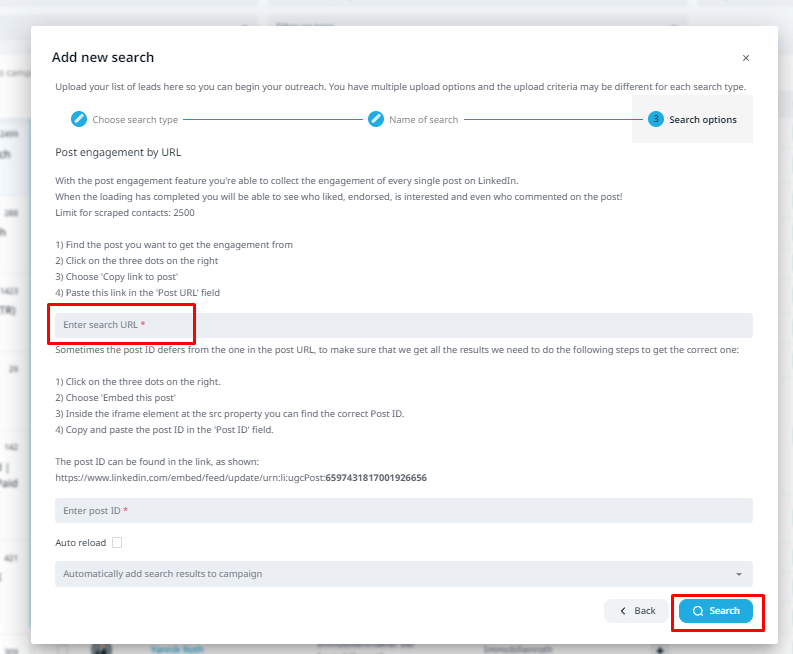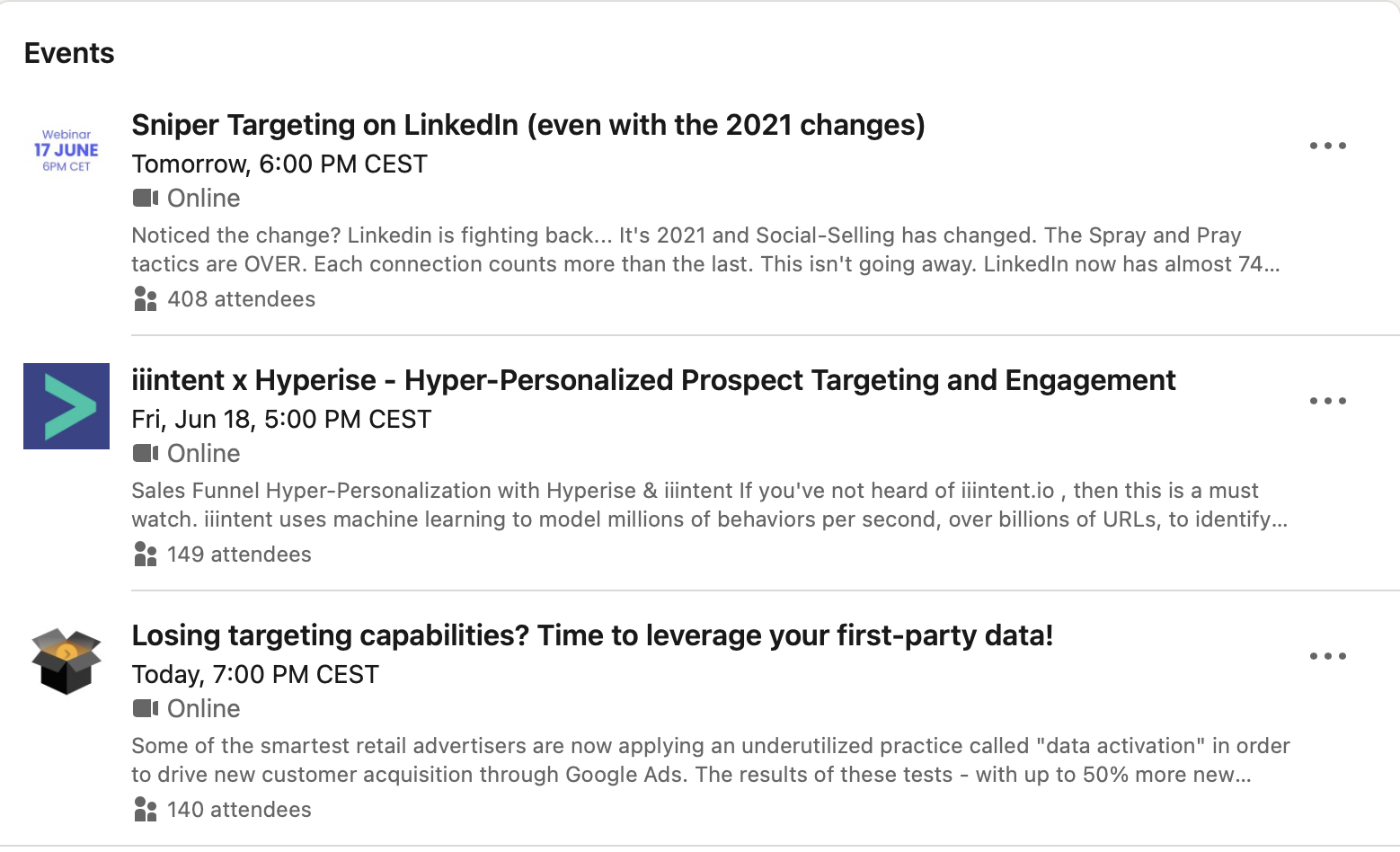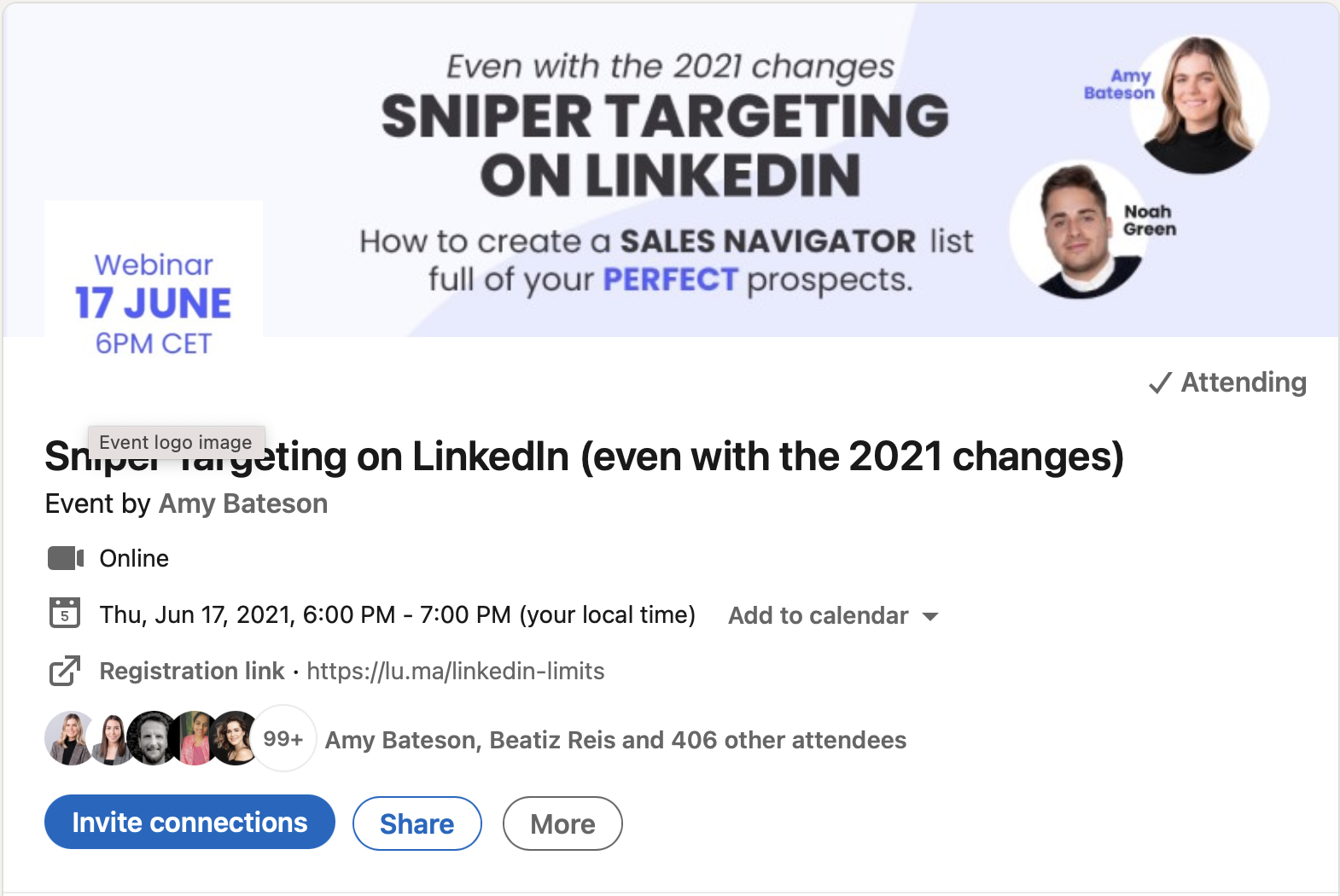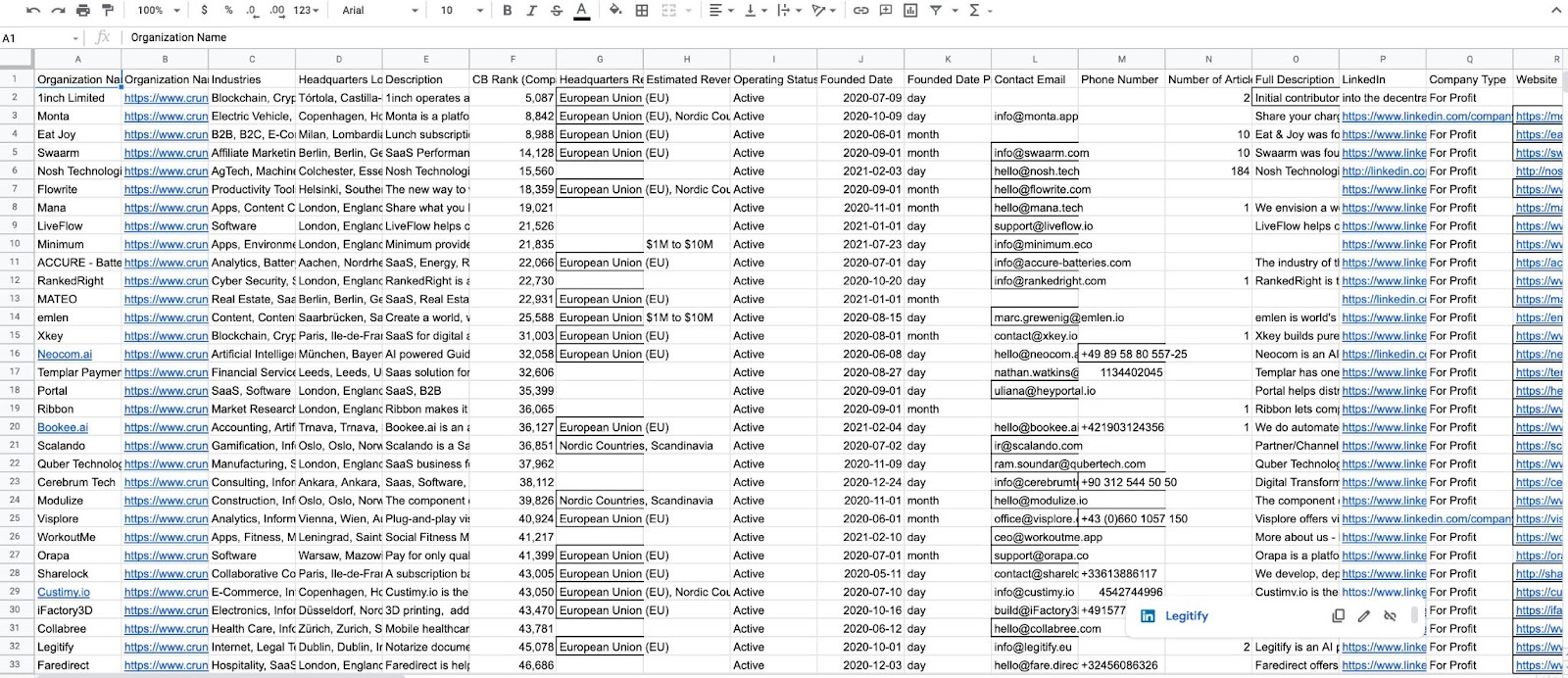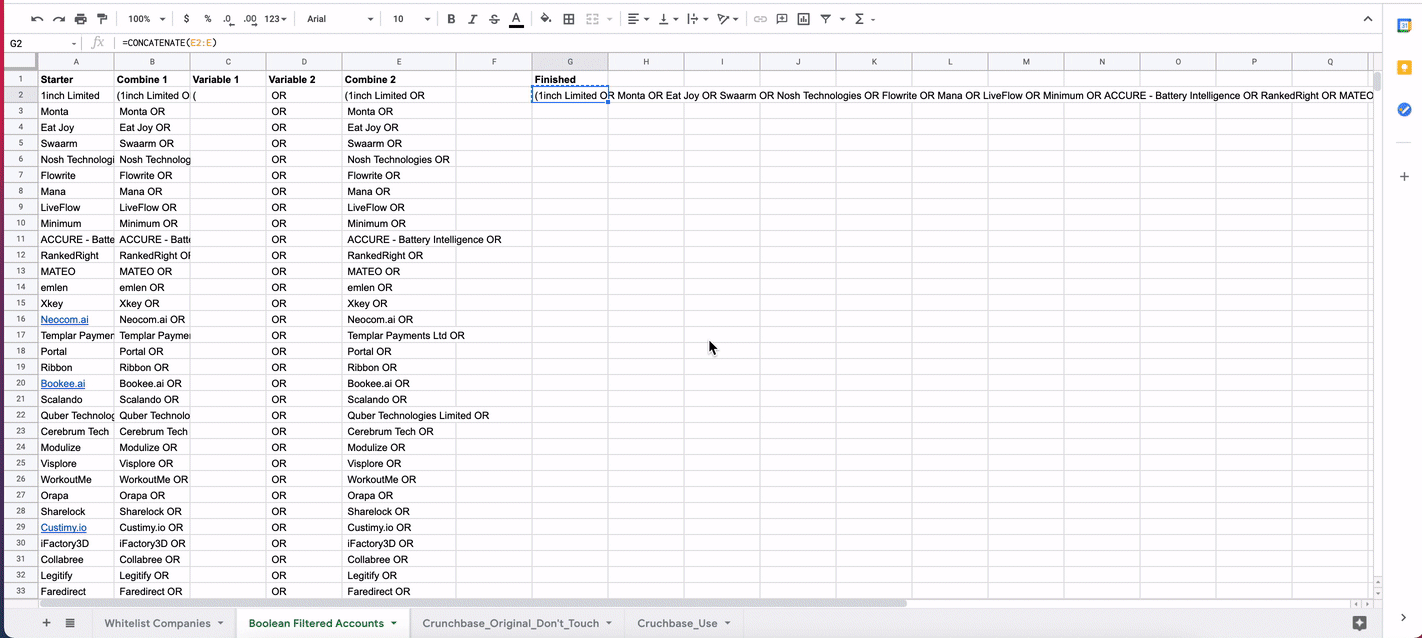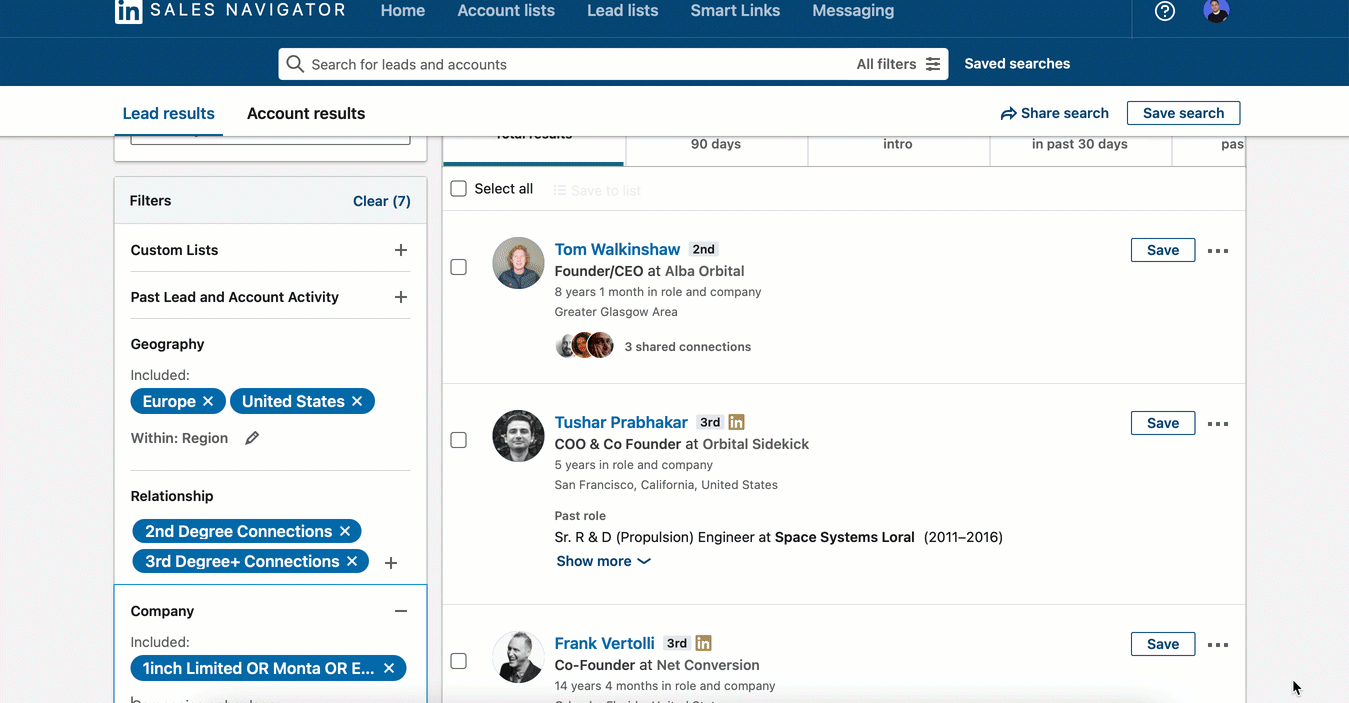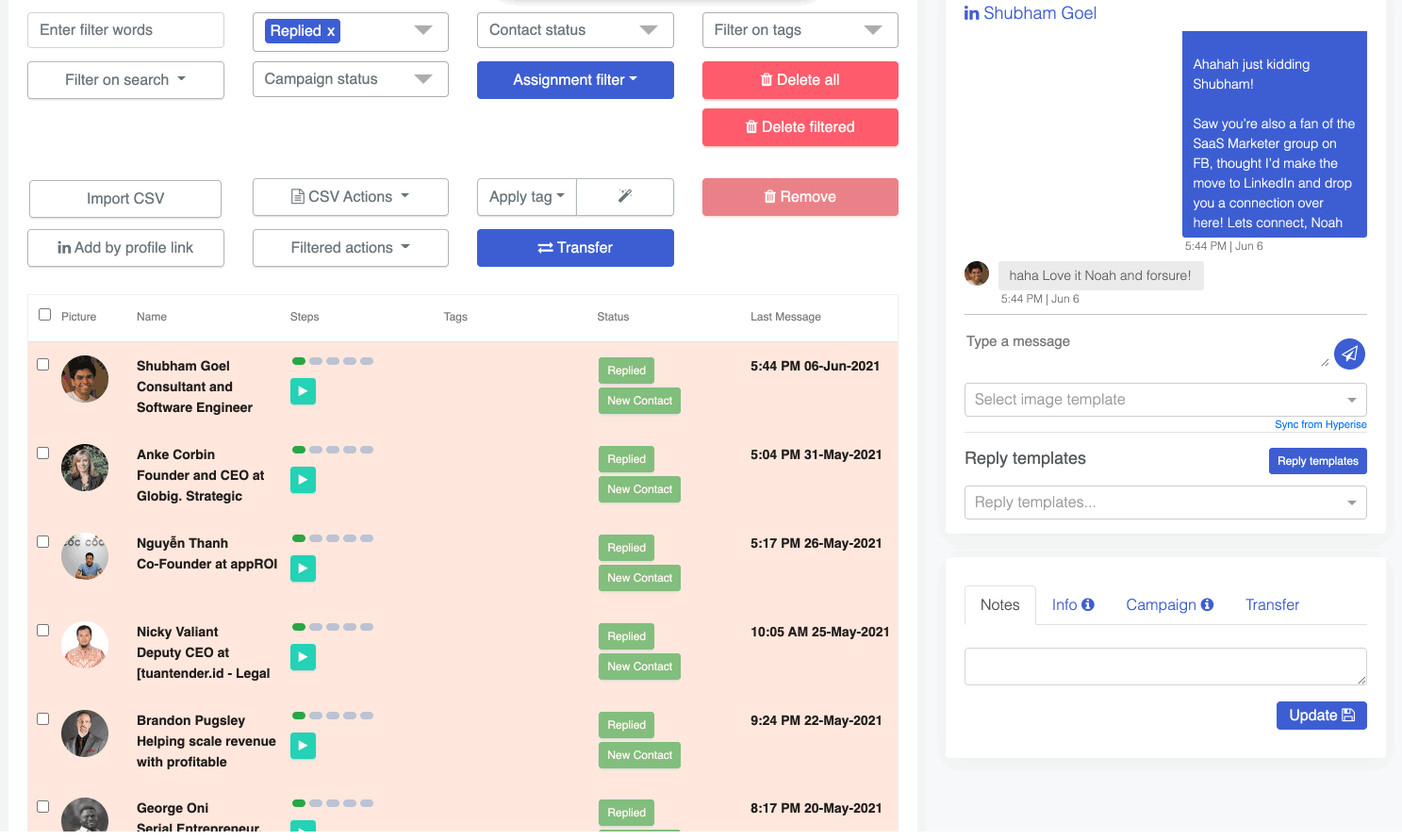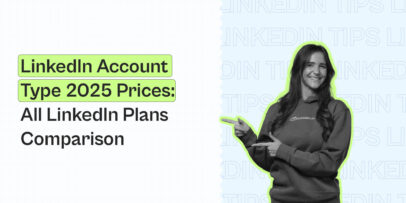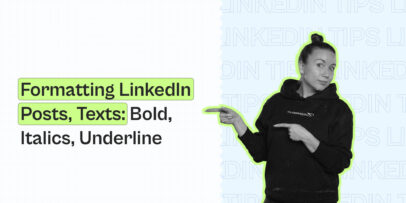LinkedIn Sales Navigator List: Expandi 2024 Sniper Targeting Update
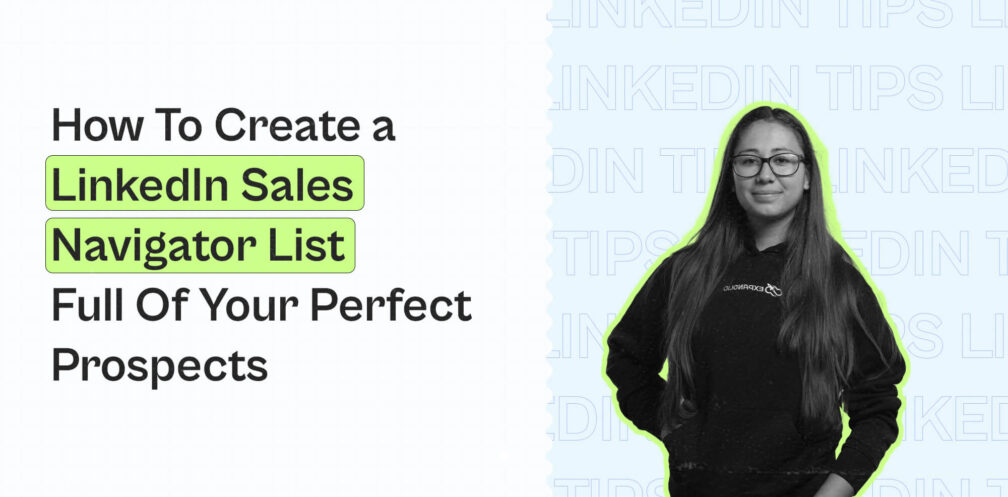
The latest LinkedIn 2024 connection limit change has made a drastic change on the platform.
Because of the 100 connection requests per week limit, many people are struggling with generating leads consistently.
Thankfully, we have a solution that will fill up your LinkedIn Sales Navigator full of perfect prospects.
Read on for the best LinkedIn practices that work with the 2024 connection limit in mind and other unique strategies that can boost your acceptance rate.
We’ll be covering LinkedIn strategies, best practices, and other marketing hacks so that you can continue generating leads like the new connection limit doesn’t apply to you.
What we’re about to cover below is based on the Expandi and KoahDigital webinar on the same topic.
If you didn’t get the chance to watch it live, don’t worry, you can still watch the Zoom replay here.
In the Webinar, Amy Bateson of Expandi and Noah Green from KoahDigital walk you through the latest LinkedIn sniper targeting strategies and best practices.
Amy is a growth marketer and lead engineer at Expandi. She helped onboard over 155 agencies over 10 months and receives a minimum of 71% acceptance rate on all her campaigns.
Noah is the co-founder of KoahDigital (LinkedIn-first outbound agency) and has 8+ years of marketing experience in marketing and sales for fast-growing SaaS companies.
The LinkedIn outreach strategies and practices they covered are as follows:
- Post Engagement.
- Scraping LinkedIn polls.
- Scraping LinkedIn events.
- How targeting has changed in 2024 on LinkedIn and how to avoid the new connection limit.
- 5 top LinkedIn targeting hacks you need to implement today.
- Special surprise from Noah.
And in the end, we’ll reveal one final surprise from Noah that can help take your LinkedIn outreach to the next level.
Now, let’s take a look at each strategy to learn how you can start filling your LinkedIn Sales Navigator list with perfect prospects in 2024.
LinkedIn Post Engagement
LinkedIn post engagement is a proven outreach strategy we’ve perfected over at Expandi.
With this strategy, we simply retarget people who liked or commented on a specific post using Expandi.
All you have to do is:
- Copy LinkedIn post URL.
- Create a New Search in Expandi.
- Go to Post Engagement.
- Paste the URL.
- Write your outreach templates.
Easy, right?
Simple tactic, but very effective if LinkedIn is limiting your connection limits to 100 per week.
Because you’ll be reaching out to prospects with whom you often have something in common (e.g. liked the same post). So, they’ll be more likely to accept your request and connect with you.
In 2024, having a high connection request is more important than ever. And this is one of our go-to campaigns for connecting with new people.
With this outreach, we often get up to a 70-80% connection acceptance rate.
For more info, how to set up similar outreach campaigns, and the exact outreach templates we use, see the full guide to LinkedIn post engagement
Scraping LinkedIn Polls
Scraping LinkedIn polls is a new tactic we’ve been successfully experimenting with.
Similar to the post-engagement strategy above, the reason this outreach campaign works well is because you can use the poll as an easy conversation starter.
And since it’s easier to answer a poll than leave a comment on LinkedIn, you’ll have more people to reach out to this way.
People can also vote on your polls without being connected with you. So, this is also a great way to attract new prospects who will be more than glad to connect with you.
If they participated in your poll, chances are, they’ll be glad to connect with you too.
Though you have to be the creator of the poll, otherwise, you won’t be able to scrape the list of prospects who answered.
To scrape LinkedIn polls:
- Copy the link to the post.
- Create a New Search on Expandi.
- Choose Post Engagement
- Add the name of the Search
- Paste the URL of the post you copied on the first step
Scraping LinkedIn Events
Scraping LinkedIn events is a great, laser-specific way to find your target audience on LinkedIn, no matter the niche.
And it takes just under 5 minutes to scrape and reach up to 1,000 sales prospects. With no need for complicated LinkedIn filters, retargeting, or other growth hacks.
Here’s how this simple outreach strategy works:
1. Find a relevant event on LinkedIn which your target audience will be attending.
2. Press ‘Attend’ so that you gain access to the list of other people who are also planning to attend.
3. Scrape the list of attendees using Expandi and automatically reach out to other attendees. To do this, copy the URL of the selected LinkedIn event, create a New Search in Expandi, and paste it into the URL.
Then, you can approach your outreach in 2 different ways:
- If you’re the one hosting the event, you can scrape the list of attendees, thank them for attending and connect with them to continue developing that relationship.
- If you’re attending the same event as your prospects, mention how you’re looking forward to it and ask a personalized question related to the event.
Because in both cases you have something in common with your prospect, most people will be glad to connect with you.
To learn how to set up a similar outreach strategy in under 5 minutes and the exact templates we’ve used, see our full guide to scraping LinkedIn events.
LinkedIn Targeting in 2024 and Building Customer Personas
As you might have noticed, LinkedIn targeting in 2024 has changed drastically due to the new 100 connection per week limit.
The spray and pray tactics are over.
And each connection counts more than ever.
While many things are still progressing, what we do know is this:
The higher your connection acceptance and reply rate are, the more likely you’ll be to exceed the 100 connection per week limit.
Essentially, LinkedIn wants people on the platform to connect with people they know personally.
So, you should really consider your outreach within the scope of getting a high connection acceptance rate.
In our experience, the 3 strategies that achieve the highest acceptance rates are as follows:
- LinkedIn post engagement.
- Scraping LinkedIn polls.
- Scraping LinkedIn events.
And some common targeting strategies we’ve had success with include:
- Event searches.
- Basic LinkedIn filtered searches.
- Sales Navigator searches.
- Post engagements.
- Recruiter searches.
- Hyper-personalized dynamic GIFs.
While there is no real visibility from LinkedIn yet as to what exactly triggers these limits, we’ve come to the realization that the new connection limit filter is a good thing.
It was needed as people were abusing LinkedIn with “quantity over quality” outreach strategies just because they could target more people than now.
Nowadays, better-performing campaigns receive fewer fuse limits. Meaning, the more qualified your prospects are, the less at risk you are.
And LinkedIn outreach campaigns with more qualified contacts didn’t have any issues with the new LinkedIn limit.
The lesson?
Higher lead qualification equals higher conversions to call booked.
So, moving forward with your LinkedIn outreach campaigns, you should focus on your targeting so that you’re reaching out to relevant prospects, and lead quality if you want to avoid the new LinkedIn connection limit.
Now, here are 5 targeting hacks to boost your acceptance rate and improve your targeting.
5 Top LinkedIn Targeting Hacks You Can Use to Boost Your Reach Today
Hack #1 build your ideal customer profiles for LinkedIn and start using search groups
Boosting your connection acceptance rate is an important step in overcoming the 100 connection per week limit.
If LinkedIn sees many people are connecting with you and replying to your messages, they’ll assume you’re connecting with people who you know personally and you’re not spamming random people.
So, when doing outreach, you should first identify the different types of people involved in your buyer process:
- Decision Makers – Tier 1 prospects at the top of the food chain. Typically CEOs, CMOs, VPs of Marketing, and so on.
- Influencers – Tier 2 prospects who are typically involved in the decision-making process and champion day-to-day activities. E.g. head of growth, head of sales, higher-level managers, and so on.
- Advocates – Tier 3 prospects who have a voice but no buying power. Think of them as “Yes Men”. This would be account managers, account executives, marketing managers, and more.
Then, you can create a prioritization matrix, within which each campaign accesses a different tier. Here’s what that might look like:
Reach out to Noah if you’d like a copy of this template!
The outcomes of this matrix are as follows:
- Break down who has access to your campaigns and is relevant.
- To qualify prospects in line with your established criteria.
- Segment your LinkedIn outreach campaigns effectively.
- Give Yourself the opportunity to create pain points specific to each tier, department, or function you’re selling to.
According to Noah, qualifying leads is much more important now.
And the higher your qualification rate is, the higher conversions to calls booked rate will be as a result.
Hack #2 Locate companies that align with your targeting criteria
This one is simple but effective.
Essentially, who you’re targeting should align with your matrix from above and your ideal customer persona.
Think of your intent indicator.
For example, the following is a list of software companies from the US + Europe, from Crunchbase.
Certain intent indicators can include: Hitting a new milestone, job changes, recent hires, high ad spend, frequently publishing blog posts, and more.
For example, if a company is quickly hiring more employees, we can assume they’re either scaling up or gained a new round of funding. In other words, they have more money to spend and your offer might be relevant at this point in time.
Once you have more intent indicators, you can think of more targeting strategies based on your offer.
Ideally, you should also use personalization when connecting here too.
Hack #3 Use booleans to filter your list of companies
With this targeting hack, you can use boolean filters next to your targeting sheet and then, paste them into Sales Navigator.
LinkedIn boolean searches include:
- Quoted searches – For an exact phrase match, put your search query around quotation marks
- NOT searches – To exclude a phrase from your search results.
- OR searches – To see results that include one or more items in a list.
- AND searches – To see results that include all items in a list.
Then, you can paste these boolean filters into Sales Navigator company section to ensure a more specific search, like so:
And this brings us to our next targeting hack.
Hack #4 Using keywords and seniority levels to boost targeting on Sales Navigator
This targeting hack uses a mix of exclusions and titles to target the right people.
It’s better to use an example of this in action to show just how detailed your Sales Navigator filtering can be:
- Geography: Europe, United States.
- Relationship: 2nd and 3rd-degree connections.
- Company: Use the boolean filters from hack #3.
- Company headcount: 1-10, 11-50, 51-200
- Seniority level: CXO, Director, Manager, Owner, VP, Partner
- Function: Business development
- Title: CEO, Co-Founder
- Excluded: Board, CTO, Finance, Growth, Marketing, Operations, Partner, Product
Hack #5 Scrub your list to ensure it’s campaign ready (‘pre-qualification’)
As the final step of outreach, you’ll need to pre-qualify your contacts so that you’re only targeting relevant prospects.
Sometimes, LinkedIn will slip through prospects within your targeting who don’t fit inside your filters.
So, to make sure your outreach campaign is ready here’s what you can do:
Within Google Sheets, you can again filter for exclusion keywords (e.g. “Social” for social media marketing) within the job title row and delete ones that are not relevant to your campaign.
As a final check, you should still go through your list of contacts manually and see if they align with your targeting criteria.
This might be time-consuming, but it’s going to be worth it as you’ll gain a higher acceptance and reply rate.
You can also dynamic personalization here to go the extra step.
Bonus Hack #6 use qualification or disqualification tags within Expandi to qualify prospects upon receiving a response
As a final bonus hack, you can add custom tags within Expandi: qualified or disqualified.
The idea here is that once you receive a reply from your prospects, you can go through their profile, see if they align with your targeting criteria, and apply the custom tag accordingly.
This way, you’re not spamming prospects who are outside your target market.
Once again, it’s worth noting that you should be targeting your ideal customers or people who fit within your search groups (from hack #1).
And by qualifying or disqualifying prospects like this, you can only move forward your campaigns with relevant prospects.
In general, this is a good sales and outreach best practice, and also ensures you’re making the most out of the 2024 LinkedIn changes.
Any questions or want a copy of some of the templates mentioned above?
Email Noah directly at: [email protected]
Conclusion
And that’s a wrap!
Hope you found this guide to LinkedIn sniper targeting useful. Even with the 2024 LinkedIn changes, you should be able to avoid the 100 connection per week limit, following the outreach strategies above.
Once again, if you’d like to listen to the video version of this guide, you can check out the replay of the webinar here.
Ready to start implementing the above LinkedIn sniper targeting strategies and take your LinkedIn outreach to the next level?
Be sure to also:
- Check out Noah’s exclusive offer here: The Complete LinkedIn Targeting Playbook.
- Get 7-days of Expandi free trial here.
- Join the LinkedIn Outreach Family for the best LinkedIn group on Facebook to get the latest updates on the 2024 LinkedIn changes.
You’ve made it all the way down here, take the final step
